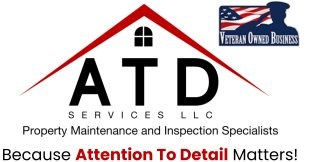Common Issues
Explore the issue that best describes your system’s problem for an expert recommendation on what you can do.
My system isn’t cooling
Possible cause: Your circuit breaker tripped
Solution: Turn off your HVAC system, find the circuit breaker, and reset the system by flipping the switch off and back on.
Possible cause: Your thermostat is set incorrectly.
Solution: Lower the temperature on your thermostat, then wait to see if you feel a change. Or, try turning the thermostat off and back on, then resetting the temperature.
Possible cause: Your system is blocked by debris or contaminants.
Solution: Clear any excess debris you can safely remove from the outside area surrounding your system. Do not attempt to clear any debris inside the system.
My system isn’t heating
Possible cause: The fuel source is shut off.
Solution: Check your system’s shut-off valve to make sure it wasn’t accidentally switched. If the shut-off valve is on, turn it off.
Possible cause: Your circuit breaker tripped.
Solution: Turn off your HVAC system, find the circuit breaker, and reset the system by flipping the switch off and back on.
Possible cause: Your thermostat is set incorrectly.
Solution: Raise the temperature on your thermostat, then wait to see if you feel a change. Or, try turning the thermostat off and back on, then resetting the temperature.
My utility bill is higher than expected
Possible cause: Your HVAC system is the wrong size for your home.
Solution: Contact an HVAC professional to accurately assess the temperature needs for your home, and discuss investing in a properly sized system if needed.
Possible cause: Your HVAC system is switching between heating and cooling too frequently
Solution: Consider investing in a smart thermostat that allows you to schedule your heating and cooling based on your changing needs. Or, create zones in your home for temperature control.
Possible cause: Your thermostat is working overtime to maintain the temperature you set.
Solution: Try to set your thermostat to a temperature similar to the one outside. If the temperature inside is drastically different than outside, your thermostat has to work harder to maintain it.
My system has little or no airflow
Possible cause: The filters in your HVAC system are dirty.
Solution: Follow the directions in your owner’s manual to change your filters.
Possible cause: A coil or another crucial component of your HVAC system is dirty or blocked.
Solution: Turn your system off and contact an HVAC professional to troubleshoot further.
Possible cause: Your vents are clogged or covered.
Solution: If you have central heating and cooling, and can safely reach the vents throughout your home, make sure none of them are covered or closed. Plus, unscrew them and gently wipe away any dirt or debris hiding underneath.
My system won’t turn off
Possible cause: Your HVAC system is the wrong size for your home.
Solution: Contact an HVAC professional to accurately assess the temperature needs for your home, and discuss investing in a properly sized system if needed.
Possible cause: Your thermostat is set incorrectly.
Solution: If you set your thermostat too low in the summer, or too high in the winter, your system will have to continously run to reach and maintain your settings. Try setting a moderate temperature instead.
Possible cause: A part of your system is malfunctioning.
Solution: Faulty coils, fans, switches and more could result in your HVAC system not receiving the message to stop heating or cooling. Contact an HVAC professional to troubleshoot further.
My thermostat isn’t working properly
Possible cause: The batteries in your thermostat are dead.
Solution: Turn your thermostat off, open it up, replace the batteries, and try resetting the temperature.
Possible cause: Your thermostat is locked.
Solution: To unlock a Trane thermostat, press the plus (+) and minus (-) keys at the same time for 3-4 seconds. Then, try resetting the temperature.
Possible cause: Your thermostat is dirty.
Solution: Turn your thermostat off, remove the cover, and gently wipe away any dust or dirt underneath with a cloth. Then, replace the cover and reset the temperature.
Understand Energy Ratings
When looking for energy efficient heating and cooling systems, you will probably come across these terms. Learn what they mean before they appear.
SEER2 ratings
SEER2 stands for seasonal energy efficiency ratio. This industry rating measures the averaged annual energy efficiency of your system operating over the entire cooling season. A higher SEER2 means your cooling system is more energy efficient.
EER2 ratings
EER2 stands for energy efficiency ratio expressed as the ratio of cooling capacity in British Thermal Units (or BTUs) per hour to electric power consumption in watts. This industry rating measures the energy efficiency of your air conditioner or heat pump cooling your home during an outdoor temperature of 95 F. A higher EER2 means your cooling system is more energy efficient.
AFUE ratings
AFUE stands for annual fuel utilization efficiency. This industry rating measures the averaged annual efficiency of a furnace. A higher AFUE means your heating system is more energy efficient.
HSPF2 ratings
HSPF2 stands for heating seasonal performance factor. This industry rating measures the averaged annual energy efficiency your heat pump operating in heating mode during the fall and winter heating season. A higher HSPF2 means your heat pump is more energy efficient.


